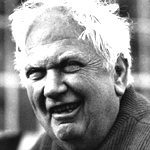
Alexander Calder
|
Virtual Calder, by Zachary Booth SimpsonAlexander Calder, 20th Century American Artist, was well known for his stunning "mobiles" with which he studied balance and motion in a totally original way.Although I am a software engineer by trade, Calder's works have long inspired the reminants of artist that lurk inside of me. This Java Applet is an electronic reproduction of his art; I aim to capture the feel of his art, but not to reproduce it. I think that Calder considered many of his works interactive long before that was a buzzword. For example, the subtle balance of the mobiles could be disturbed by blowing and touching; his Circus works were built exclusively for his own interactive entertainment. Unfortunately, when museums now show these pieces, they are understandably reluctant to allow the general public to manipulate these precious works and therefore the interactive aspect, so crucial to his vision, is lost. This has been a source of considerable frustration to me when I have visited his works. This frustration, as well as my own attempts at recreating similar works, inspired me to create this simulation environment. Enjoy! |